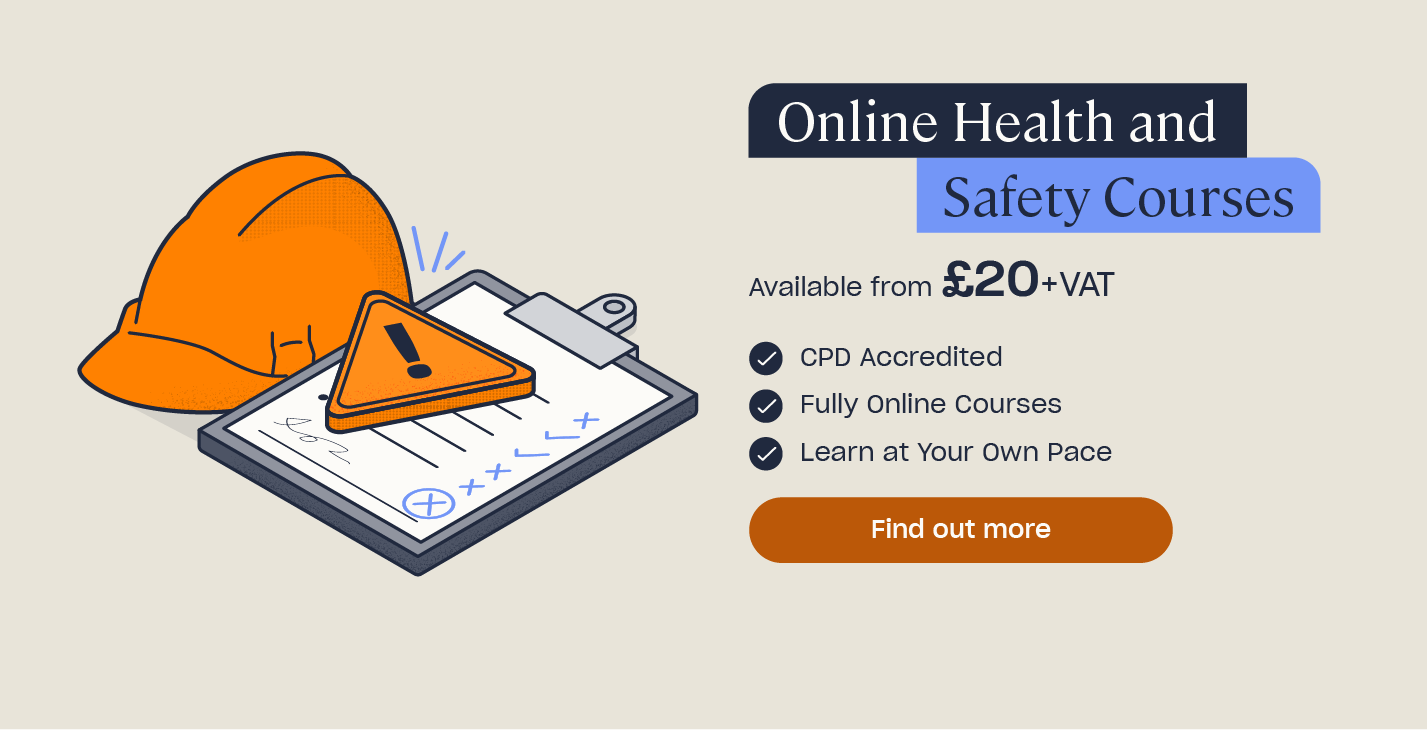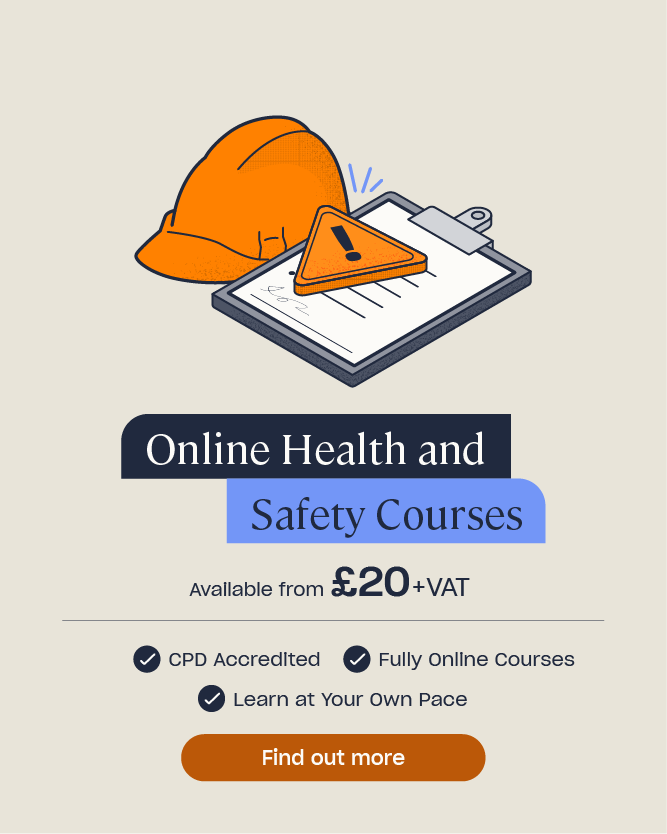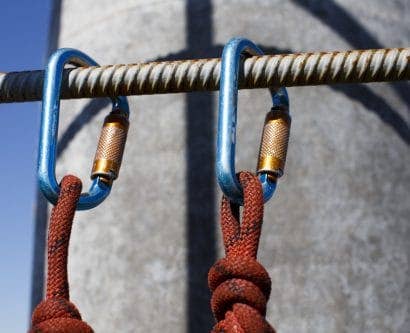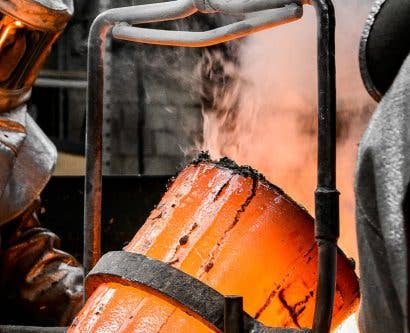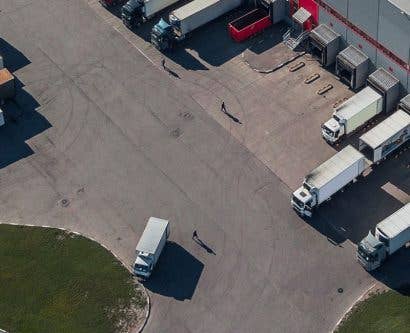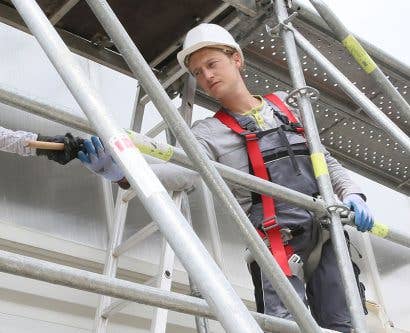Ten Common Construction Site Hazards
A construction site is any piece of land where a building is being built or repaired. Those who work on construction sites are often required to use large tools and pieces of machinery, work at height, and in environments where hazardous materials are present. Because of the nature of such work, working on construction sites can be dangerous.
This article will outline common construction hazards. It will provide a list of hazards on a construction site so that you are aware of the potential dangers and how to prevent them.
List of Hazards on a Construction Site
Construction hazards are heavily dependent on the type of construction work that is being carried out. For example, working on scaffolding presents entirely different hazards to working with asbestos.
The top ten risks and hazards from working on construction sites are:
- Working at height.
- Moving objects.
- Slips, trips, and falls.
- Noise.
- Hand arm vibration syndrome.
- Material and manual handling.
- Collapsing trenches.
- Asbestos.
- Electricity.
- Airborne fibres and materials.
Working at Height
The Health and Safety Executive (HSE) publish statistics every year that detail the most common causes of ill health and accidents – both fatal and non-fatal – to workers in the UK. Each year, approximately a quarter of worker fatalities are caused by a fall from height. This puts working at height as the most common cause of fatal injuries to workers.
Suitable training is required for all employees who work at height. Employees should be trained in working on different pieces of equipment and surfaces, such as how to work safely on scaffolding, ladders, and roofs.
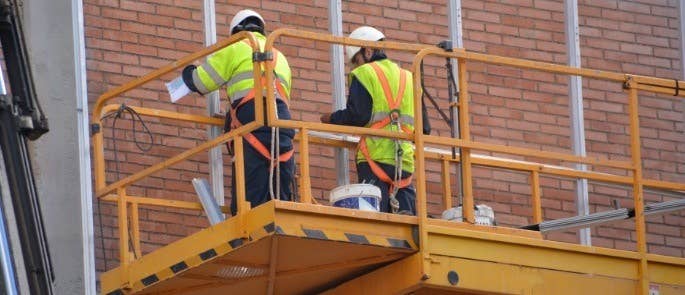
The law requires that all employers must assess the risks from working at height. A plan should then be devised to ensure all work is carried out safely. The employee must have received the correct training in working at height, and must be aware of the safety procedures they should follow when doing so.
Working at height must be properly planned and supervised, and certain approaches and precautions should be adopted. These are:
- Avoid working at height where possible. For example, if something can be assembled on ground level, do it there.
- Use equipment with an extra level of safety to reduce the risk of a fatal fall. For example, a scaffold with a double guard-rail.
- Minimise the consequences of a fall, for example by providing a safety net.
High Speed Training offers a convenient, online Working at Height training course, suitable for gutter and window cleaning, solar panel installation, minor roof work and many more. Head to our course library for full details.
Moving Objects
A construction site is an ever-changing environment, and construction hazards continue to increase as construction is underway. There are many moving objects commonly encountered on construction sites. These include overhead lifting equipment, supply vehicles, and diggers, all of which move around a usually uneven terrain.
Reducing risks should always be a priority. Workers should always:
- Avoid working close to the moving object.
- Be vigilant of their surroundings, especially if the object does not have lights or beepers.
- Wear Personal Protective Equipment (PPE), such as a high visibility jacket, to ensure they are seen.
What should you do if an employee refuses to wear their PPE? Our guide offers advice for employers in this situation.
Slips, Trips, and Falls
Slips, trips, and falls can happen in almost any environment. As construction sites often have uneven terrain, buildings at various stages of completion, and unused materials on site, it is unsurprising that slips, trips, and falls are a common hazard.
HSE reports that several thousand construction workers are injured every year following a slip or trip, and that most of these could be avoided by effectively managing working areas and access routes, such as stairwells and footpaths.
Those in control of construction sites must effectively manage the site so that workers can move around it safely. Risks should always be reported and sorted to reduce the chances of injury.
Some causes of slips and trips and how to prevent them include:
- Uneven surfaces – The risk of these can be reduced by providing walkways that are clearly designated as walkways, having good conditions underfoot, and being well lit.
- Obstacles – Instances of slipping and tripping over obstacles can be dramatically reduced by everyone keeping their work and storage areas tidy and designating specific areas for waste collection.
- Trailing cables – Cordless tools should be used where possible. If this is not possible, cables should be run at high levels.
- Wet or slippery surfaces – If a surface is slippery with mud it should be treated with stone, and if it is slippery with ice it should be treated with grit. Any areas that are slippery should be signposted, and footwear with a good grip should be worn.
Want to learn more about preventing slips, trips and falls in your workplace? Our guide offers tips for each hazard. High Speed Training also offer a Slips, Trips and Falls training course to help you control the associated risks in your workplace.
Noise
Construction is noisy and, as a result, noise is a common construction hazard. Loud, repetitive, and excessive noise causes long term hearing problems, such as deafness. Noise can also be a dangerous distraction and may distract the worker from the task at hand, which can cause accidents.
It is the employer’s responsibility to carry out a comprehensive noise risk assessment, and provide appropriate PPE where necessary.
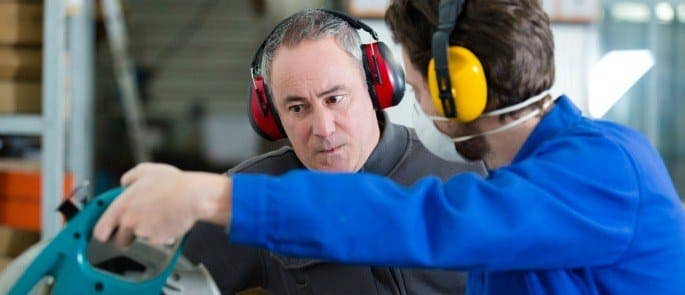
Hand Arm Vibration Syndrome
Hand Arm Vibration Syndrome (HAVS) is a painful and debilitating disease of the blood vessels, nerves, and joints. It is usually caused by the prolonged use of hand-held power tools, including vibratory power tools and ground working equipment.
HAVS is preventable, however once the damage is done, it is permanent. HSE reports that nearly 2 million people are at risk of developing HAVS. Damage from the disease can include the inability to do fine work, and cold temperatures can trigger painful attacks in the fingers.
Construction workers should be given appropriate protection when using vibrating tools, and equipment should be well maintained.
High Speed Training offers a dedicated online HAVS training course to help you comply with UK health and safety legislation.
Material and Manual Handling
Materials and equipment are constantly being lifted and moved around construction sites, whether this be manually or by equipment. Either way, handling carries a degree of risk.
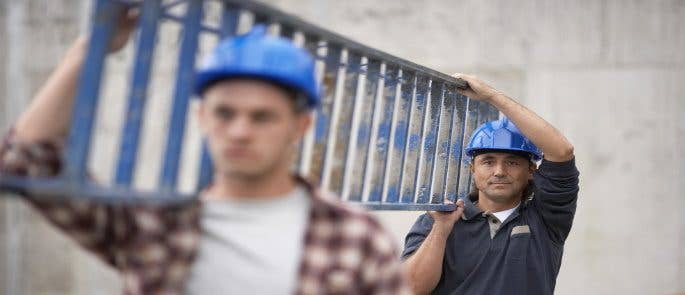
Where duties involve manual handling, adequate training must be provided. If an employee is required to use lifting equipment, they must be trained in how to use this and a test should be taken to check their ability to use the equipment safely.
Do you know your limits for lifting heavy boxes or equipment? Check out our guide to Manual Handling Safe Zones with handy dos & don’ts.
Collapsing Trenches
A common occurrence on construction sites is the collapsing of trenches with workers inside. Further, a building that is being demolished or under construction can suddenly and unexpectedly collapse, which can seriously injure, or even kill, those inside.
Precautions for collapse need to be taken before work starts. If the project requires a trench, site managers should:
- Consider the kind of support that is best suited for the trench.
- Ensure the trench is fully secure.
- Regularly inspect the trench both before and during the work shift.
Asbestos
Asbestos refers to a set of six naturally occurring fibrous minerals. When materials that contain asbestos are disturbed or damaged, these fibres are released into the air. Inhaling these fibres can cause fatal and serious diseases such as lung cancer, asbestosis, and pleural thickening.
Asbestos kills around 5,000 workers per year, and an average of 20 tradespeople die every week as a result of past exposure. An estimated 500,000 public buildings in the UK are thought to contain asbestos.
If there is asbestos on the construction site, workers must be informed where it is. They must be trained in what to do should they come across suspicious materials that may contain asbestos.
Duty holders have a legal requirement to ensure building or site occupants are suitably protected from asbestos-related risks. One way to observe your duty of care is to provide awareness training to those who may come into contact with Asbestos. Take a look at our Asbestos Awareness Course for more information.
Electricity
It is harmful to be exposed to electrical live parts. Harm can occur either by touching live parts directly, or indirectly by a conducting object or material.
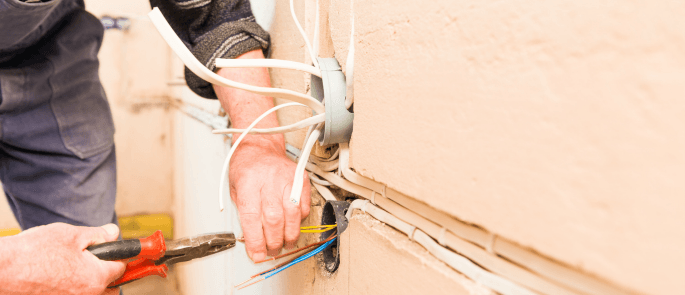
HSE reports that approximately 1,000 electrical accidents at work are reported every year. Most of these accidents arise from contact with overhead or underground power cables and electrical equipment/machinery. Electric shocks are a common cause for falls from ladders, scaffolds, and other work platforms. There is also a growing number of electrocutions involving workers who are not qualified electricians, but who are carrying out electrical work on construction sites.
Airborne Fibres and Materials
Unsurprisingly, a lot of dust is produced on construction sites. The dust on construction sites is often an invisible, fine, and toxic mixture of hazardous materials and fibres. This can damage the lungs and lead to diseases such as chronic obstructive pulmonary disease, asthma, and silicosis.
It is the duty of all employers to ensure protective equipment is used. Simply providing it is not enough.
We hope that this article has proved useful in explaining common construction hazards, and their reason for occurring. Listed below are further resources relating to hazards and safety in construction.
What to Read Next:
- Basic Health and Safety Training
- PPE in Construction: Safety Guidance and Checklist
- Understanding the Classification of Grinding Wheels
- What are the Hazards of Grinding?
- Electrical Safety Guidance for Working on Construction Sites
- Crane Safety Hazards and Control Measures
- Slips, Trips and Falls Quiz
- Understanding the Marking System for Abrasive Wheels
- Safely Securing Ladders: Guidance & Procedure
- Toolbox Talks in Construction: Guidance on Meeting Topics and Resources
- What is Effective Communication in Construction?
- How to Become a Construction Worker
- How to Dispose of Construction Waste
- What is the Difference Between Hazard and Risk?
- Protecting the Public During Construction Projects


